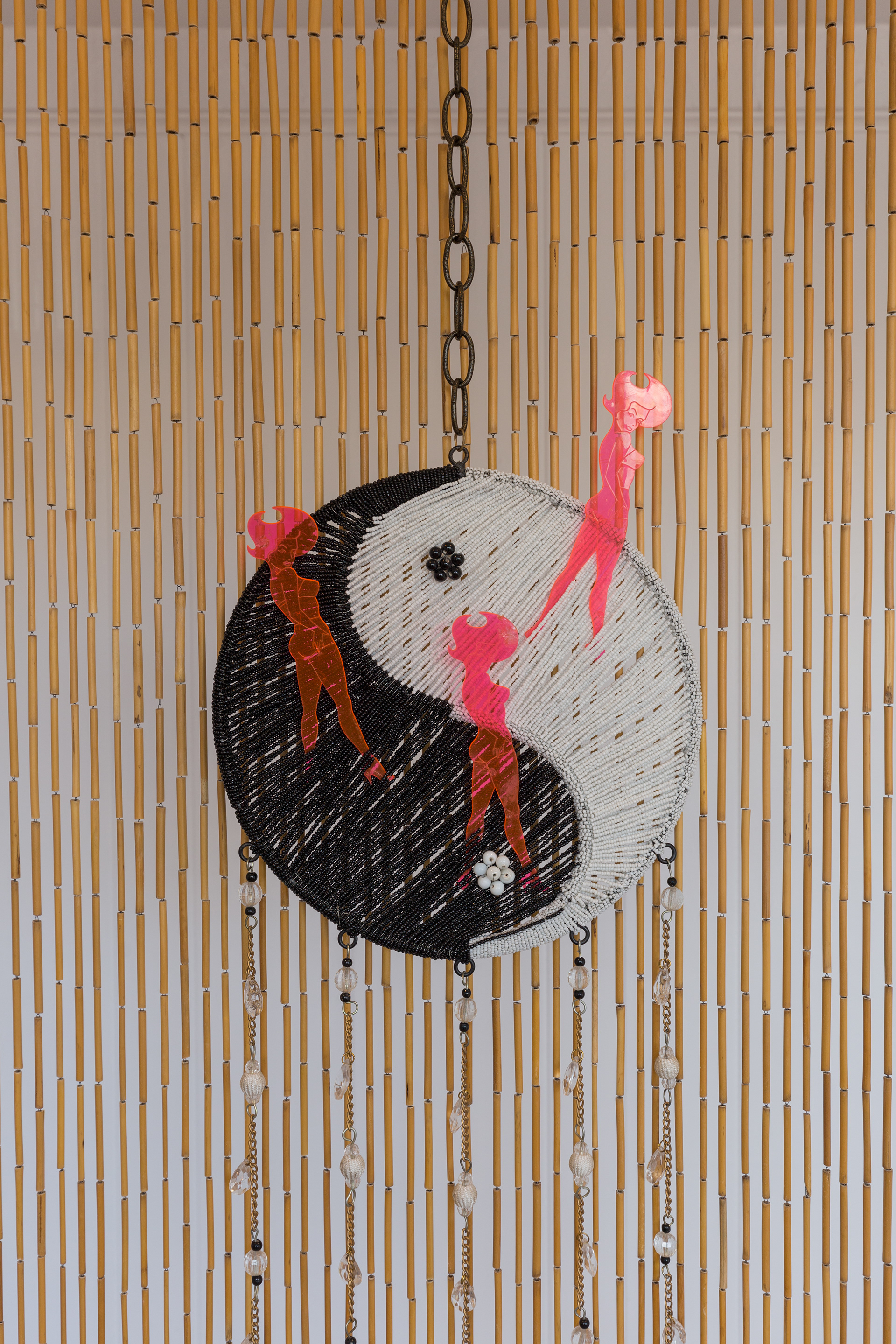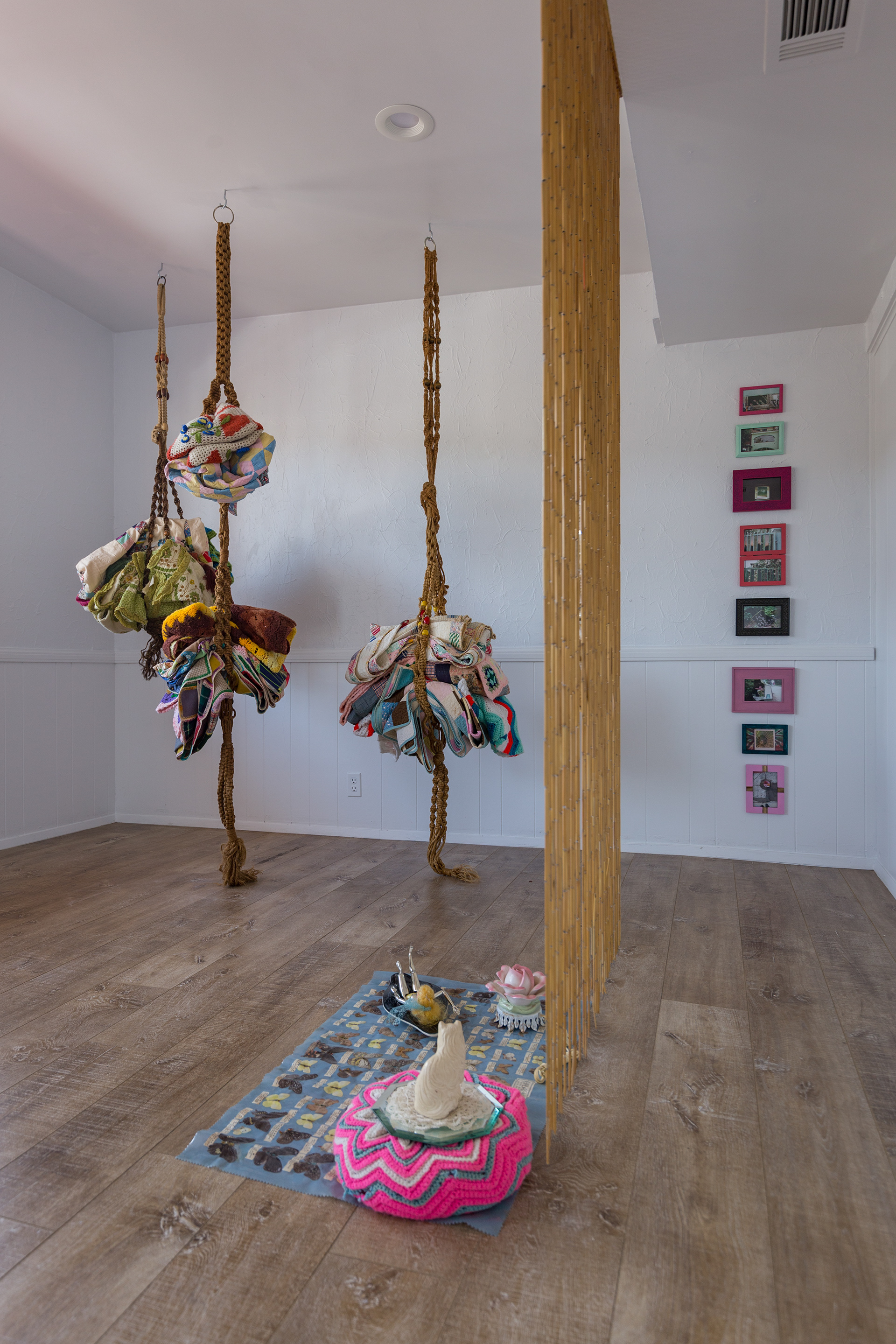Ramble On Baby, Settle Down Easy
Bamboo beaded curtain, yin-yang beaded sun chime, plastic devil girls, crochet pillow, cat family candle, doilies, porcelain rose light, Spectra Barbie, vaginal ceramic dish, and plastic butterfly species diagram, 2023, 84 x 36 x 26 inches



Installation views from Two Rooms Gallery, La Jolla, CA, Without love in the dream, it’ll never come true, Curated by Lizzie Zelter, April 16 - May 6, 2023
Two Rooms is proud to present "Without Love in the dream it’ll never come true", a two-person exhibition featuring the work of Tessie Salcido Whitmore (b. 1969, El Monte, CA) and Becca Ford (b. 1996, Chicago, IL). Both artists explore what factors produce the self and the secret power of the mundane. They are heavily influenced by their respective upbringings in 1970s Southern California and early 2000s Midwestern suburbia. This exhibition centers around the artists’ shared interests in the dominant cultural narratives of their youths, craft, and pop art movements, and the vast worlds of domestic and commercial objects.
Both practices make meaning by combining disparate elements of material culture. Ford makes paintings and wall-bound collages, while Salcido Whitmore creates sculptures and installations. The artists share a visual affinity that is coded with tropes of the “feminine”: bold, bright colors, motifs such as the rose and the hand, and soft materials including yarn, faux fur, and quilts.
Without love in the dream it’ll never come true is the final couplet of the Grateful Dead song, “Help on the Way,” on Blues for Allah from 1975. The title links imagination and result: the former is required to yield the latter. For Salcido Whitmore, the processes of searching for, accumulating, and as she put it, “rescuing” the physical objects that make up her work are just as significant as the final combination. The majority of Salcido Whitmore’s materials are second-hand, meaning they had a previous life before coming into her possession. Otherwise, they are dollar-store items, mass-produced and readily available. In merging objects with opposing histories and repositioning them in tandem as art, Salcido Whitmore challenges our notion of value and harkens back to her counterculture upbringing.
Ford too collects in her everyday life, creating connections between a range of physical and digital ephemera. Like a true child of the early aughts, her references regurgitate aesthetic stereotypes of earlier eras. She incorporates an iPad into one piece, while using Polaroids in another, demonstrating how contemporary visual culture is a meld of cutting-edge innovation and technological nostalgia.
Portals are present throughout this exhibition, manifested as screens, rivers, windows, doorways, and voids. These dreamlike spaces are alternate realms that glimmer with potential. Without love in the dream it’ll never come true forms an intergenerational dialogue around the stories, visual trends, and commodities that form identity. By manipulating and rearranging these elements, Salcido Whitmore and Ford show us what is possible in a contemporary art practice.